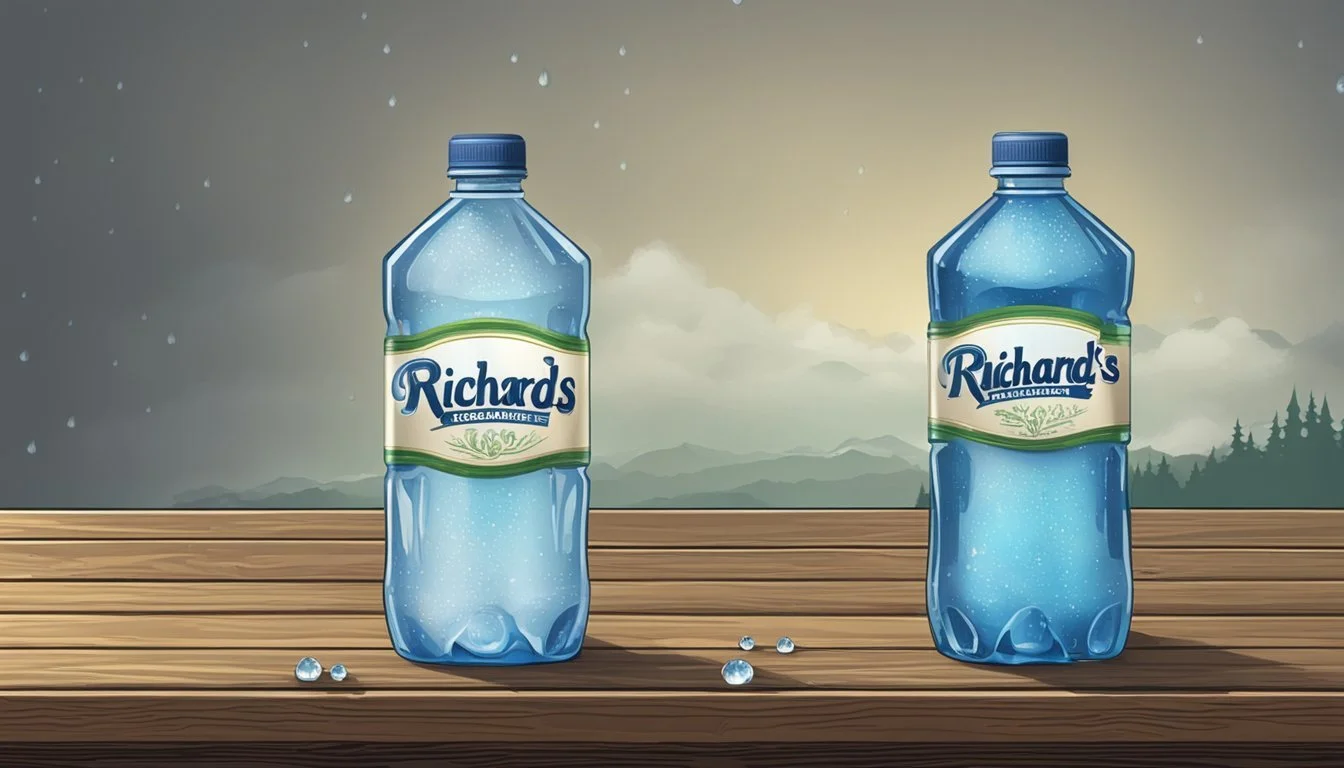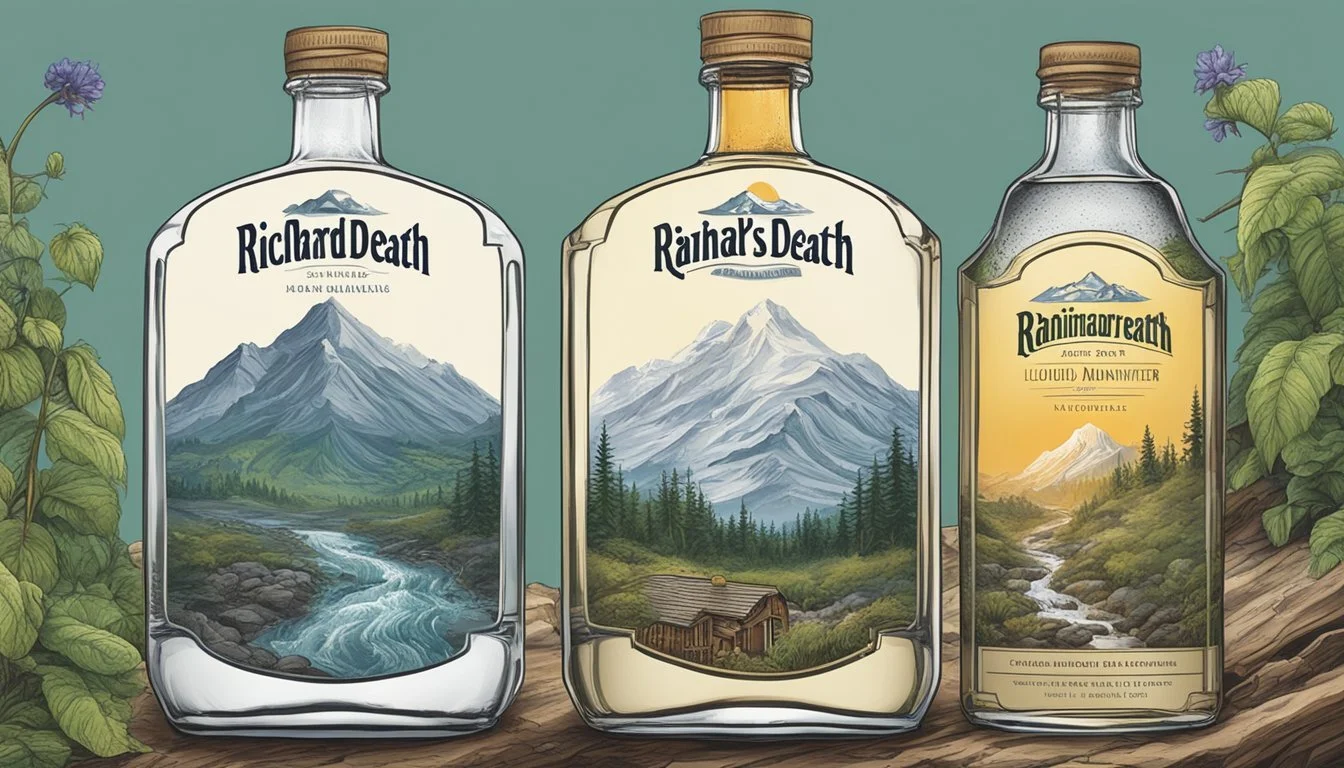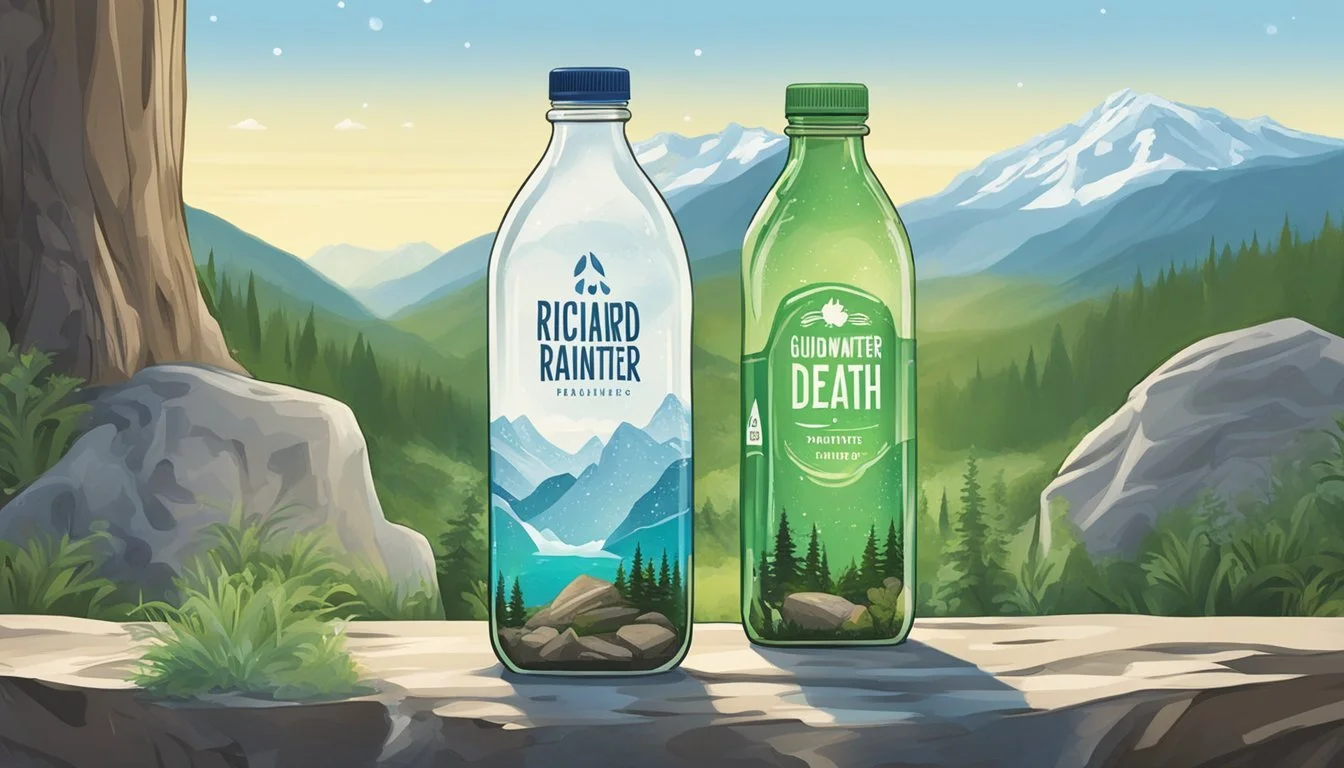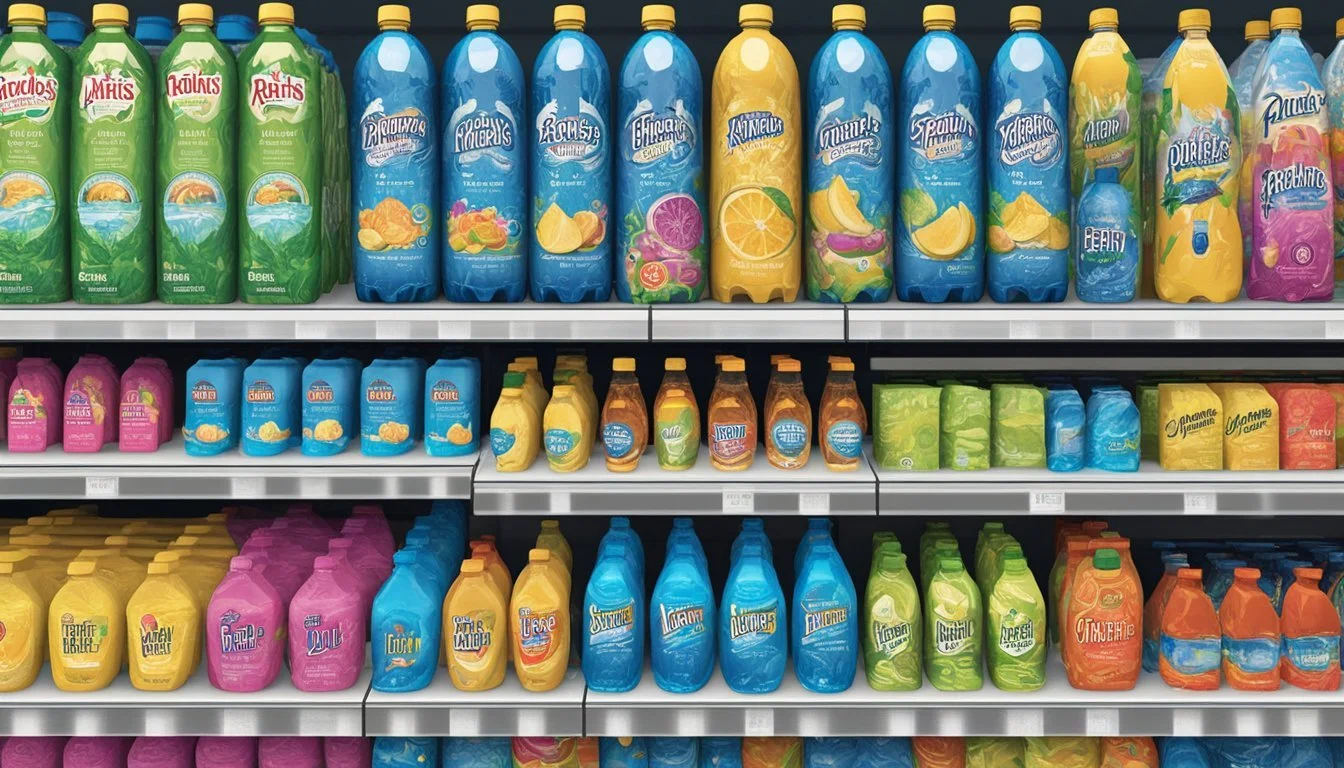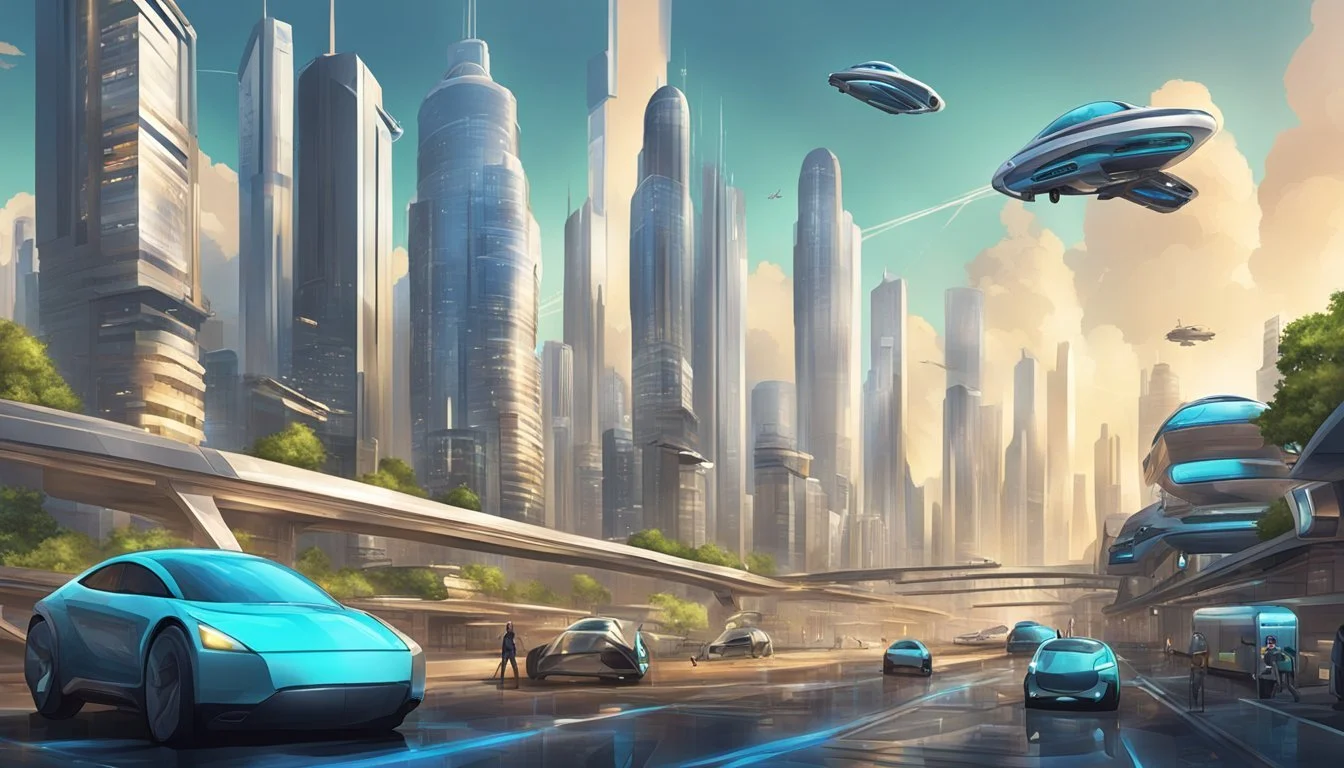Liquid Death vs. Richard’s Rainwater
Comparing the Best Bottled Water Brands
Water enthusiasts and eco-conscious consumers often find themselves comparing Liquid Death and Richard’s Rainwater. Liquid Death offers both sparkling and still water in tallboy cans, serving as a unique alternative to traditional plastic bottles. On the other hand, Richard’s Rainwater captures the purity of rainwater, touted for its distinct and refreshing taste.
Liquid Death's branding appeals to those who seek a blend of sustainability and edginess, while Richard’s Rainwater provides a more natural, tannic profile reminiscent of fresh rainfall. Both brands are easily accessible, available through various retailers including Whole Foods and 7-11, making them convenient choices for reducing plastic consumption.
The decision ultimately comes down to personal preference in taste and packaging. Whether one leans towards the bold presentation of Liquid Death or the naturally sourced Richard’s Rainwater, both offer viable, eco-friendly alternatives to plastic bottled water.
Historical Development and Brand Origins
Both Richard’s Rainwater and Liquid Death have unique stories that set them apart in the bottled water industry. They originated under distinct circumstances and have grown to capture the imagination and loyalty of a wide range of consumers.
The Story of Richard’s Rainwater
Richard Heinichen founded Richard’s Rainwater in the early 1990s with a mission to provide clean, sustainable drinking water. Based in Dripping Springs, Texas, Heinichen realized the potential of harvesting rainwater as a pure water source. His method involved capturing and purifying rainwater, which resonated with environmentally conscious consumers.
Richard’s Rainwater was one of the first companies to use rainwater collection for commercial purposes. It emphasizes sustainability and minimal environmental impact. The company’s founder, Heinichen, positioned the brand to cater to consumers looking for eco-friendly and pure water options. Their tagline, "Better than Bottled," captures their commitment to quality and the environment.
Liquid Death: From Concept to Market
Liquid Death, on the other hand, emerged as a disruptor in the bottled water industry. Founded by Mike Cessario in 2017, the brand took a unique approach with its provocative name and aggressive marketing. The company’s “murder your thirst” slogan and heavy-metal-themed branding aimed to stand out and attract a younger, edgier demographic.
The brand’s water, sourced from the Austrian Alps, is available in both still and sparkling varieties, packaged in distinctive tallboy cans. Liquid Death quickly gained traction thanks to viral marketing campaigns and a strong social media presence. Independent ownership and a commitment to innovative branding have helped the brand grow rapidly and capture a niche market that values both quality and identity.
Environmental Impact and Sustainability
Liquid Death and Richard’s Rainwater adopt distinct approaches to sustainability, focusing on environmentally conscious practices. Richard’s Rainwater specializes in utilizing rainwater, while Liquid Death emphasizes zero-waste packaging and reducing carbon footprints.
Sustainability Practices in Bottling
Liquid Death advocates for zero-waste and recyclable packaging. Their cans are aluminum, which is highly recyclable and has a lower carbon footprint compared to plastic.
Richard’s Rainwater utilizes glass bottles and aluminum cans, both of which are more sustainable than plastic. They focus on minimizing waste throughout the bottling process. Their approach is aimed at creating a net-positive environmental impact by encouraging reusable and recyclable options.
Both companies strive to ensure that their bottling processes have minimal environmental impacts, promoting sustainably sourced materials.
Rainwater Harvesting and Renewability
Richard’s Rainwater capitalizes on rainwater collection. By capturing rain before it reaches the ground, the water remains pure and reduces the reliance on traditional water sources.
This method is particularly renewable as it uses the natural hydration cycle. In 2022, Richard’s Rainwater collected approximately 4 million gallons of rainwater, underscoring its large-scale renewable operations.
On the other hand, Liquid Death does not harvest rainwater but focuses instead on sourcing water from natural springs. They have implemented practices to ensure their water sourcing remains sustainable and replenishes naturally without causing environmental degradation.
Both companies showcase distinctive practices, contributing to their sustainability efforts and environmental impact.
Product Range and Variants
Liquid Death and Richard's Rainwater both offer distinct selections suited to diverse consumer preferences. Each brand provides various types of water and packaging options, catering to different tastes and needs.
Types of Water Offered
Liquid Death primarily features two main types of water: still and sparkling. They package their water in aluminum cans, which are made from 70% recycled material. This eco-friendly approach resonates well with environmentally-conscious consumers. Available in both six-packs and single cans, Liquid Death can be easily purchased from their website and popular retailers like Whole Foods and Sprouts Farmers Market.
Richard's Rainwater stands out by offering water sourced solely from rainwater. They provide both still and sparkling rainwater options. Known for their commitment to sustainability, they use a proprietary filtration system that aims to minimize waste. Their products are available in both bottled and canned forms, ensuring accessibility and convenience for customers who prefer different packaging formats.
Flavor Profiles and Offerings
Liquid Death doesn't limit itself to plain water. They have expanded their range to include flavored sparkling waters. These offerings come in various flavors, allowing customers to enjoy a refreshing twist on regular water. The flavors are designed to appeal to a broad audience and include choices like Mango Chainsaw and Severed Lime, which add a fruity zest to the drinking experience.
Richard's Rainwater, on the other hand, maintains a more traditional approach with their flavor offerings. They focus on delivering pure, clean-tasting still and sparkling rainwater without additional flavors. Their emphasis is on the natural taste of rainwater, which sets them apart from other brands that rely on added flavors.
Both brands cater to different market segments – Liquid Death with its bold flavors and edgy branding, and Richard's Rainwater with its pure, rain-sourced water.
Water Source and Collection
Understanding the origins and collection methods of Liquid Death and Richard's Rainwater is crucial for determining which bottled water stands out. The significance of the source and the way water is harvested directly impact both its quality and environmental footprint.
Harvesting Practices
Liquid Death sources its water from natural springs. The collection process involves tapping into these springs, ensuring minimal environmental disruption. The water is then transported to the processing facility in large tanks to maintain its purity.
Richard's Rainwater adopts a different approach. They harvest rainwater, especially in some of the rainiest cities. Advanced filtration systems are used to ensure that the collected rainwater is clean and safe for consumption. This method results in virtually no waste.
Source Locations and Significance
Liquid Death's spring water originates from the Austrian Alps, known for their pristine environments. These springs are praised for their mineral-rich content and purity, providing a unique taste profile. The significance lies in the untouched nature of these spring sources.
Richard's Rainwater collects its water from rain, essentially harvesting directly from clouds. The collection sites are strategically chosen in regions with high rainfall. This practice not only maximizes water availability but also ensures that they produce more drinking water than traditional sources. By relying on rain, Richard's Rainwater aligns closely with sustainable water practices.
Health and Quality Considerations
Examining the health and quality of water is crucial when comparing Liquid Death and Richard’s Rainwater. Factors such as the types of minerals present, purification methods, and potential contaminants significantly affect quality.
Aquatic Attributes
Liquid Death is sourced from 100% mountain spring water in the Austrian Alps. It is known for its clean, mineral-rich profile. Minerals like calcium, magnesium, and potassium are naturally occurring in these spring waters, contributing to both taste and nutritional value.
Richard’s Rainwater, collected from rainwater, offers a different mineral composition. This water generally has lower levels of naturally occurring minerals compared to spring water. However, it’s free from chlorine, fluoride, and other additives that may be found in municipal sources.
Purification and Filtration Processes
Liquid Death undergoes rigorous filtration and purification processes. The water is filtered to remove potential contaminants and meets bottled water standards, ensuring a high level of purity. The packaging in aluminum cans is designed to be eco-friendly, reducing plastic waste.
Richard’s Rainwater employs a multi-stage filtration process. The collected rainwater is filtered and purified to remove any contaminants, ensuring it is safe for consumption. This involves processes including micro-filtration and UV sterilization to kill bacteria and other pathogens. This brand also prides itself on being free from chemicals like ammonia and lead.
Richard’s Rainwater is also stored in BPA-free bottles, contributing to overall water purity and consumer safety.
Packaging and Distribution
Liquid Death and Richard’s Rainwater approach packaging and distribution with different strategies. Each utilizes distinct materials for their containers and follows unique distribution channels, influencing their environmental impact and consumer reach.
Material Selection for Packaging
Liquid Death uses aluminum cans for packaging its water. These cans are 100% recyclable and can be recycled infinitely without losing quality. Choosing aluminum over plastic significantly reduces energy requirements and environmental damage.
Richard’s Rainwater, on the other hand, packages its water in glass bottles and some plastic bottles. Glass, while eco-friendly due to its recyclability and purity, is heavier and more fragile compared to aluminum. The use of plastic bottles, although convenient, brings about environmental concerns due to low recycling rates and longer decomposition times.
Logistics of Water Distribution
Liquid Death's distribution network includes major retailers like Central Market and Sprouts. They focus on a centralized distribution model to ensure wide availability. The product's durability and relatively lightweight aluminum cans enhance shipping efficiency and reduce transportation emissions.
Richard’s Rainwater also taps into Central Market and Sprouts but has a more localized distribution. By collecting and purifying rainwater at various sites in the U.S., they minimize transport distances. This method supports sustainability but may limit widespread accessibility compared to the more expansive logistics of Liquid Death.
Market Presence and Retail Partnerships
Liquid Death and Richard's Rainwater have both made significant strides in terms of market presence and retail partnerships, each adopting unique strategies to enhance accessibility and brand visibility.
Retail Chains and Accessibility
Liquid Death's unique branding has earned it spots in major retail chains nationwide. It is available in Whole Foods, Kroger, and Albertsons, ensuring a widespread reach across multiple states. This accessibility extends both to urban centers and local communities, making Liquid Death a familiar name on store shelves.
Richard's Rainwater, on the other hand, has focused on select high-end retailers and local outlets. While not as ubiquitously available, it can be found in Whole Foods and other niche stores specializing in sustainable and environmentally friendly products. This strategy appeals to consumers who prioritize eco-conscious choices and prefer supporting local businesses over large chains.
Strategic Brand Partnerships
Liquid Death has leveraged its edgy brand image to form strategic partnerships with various entities. Collaborations with music festivals, extreme sports events, and influencer marketing campaigns have amplified its market presence. Such partnerships enable the brand to target a younger, more dynamic audience, driving both sales and brand loyalty.
Richard's Rainwater, in contrast, emphasizes its sustainability ethos in partnerships. The brand collaborates with environmental organizations and local communities to reinforce its green credentials. Partnerships with Nestlé and other large beverage companies also help to amplify its reach, tapping into established distribution networks while maintaining an eco-friendly image.
Both brands utilize their unique strengths in retail and strategic partnerships to establish a significant market presence, each in their distinctive way.
Consumer Perception and Brand Positioning
Examining the consumer perception and brand positioning of Liquid Death and Richard’s Rainwater reveals distinct strategic approaches and market placements. While Liquid Death embraces boldness, Richard’s Rainwater focuses on purity.
Branding and Consumer Messaging
Liquid Death stands out with its edgy, irreverent branding. The name "Liquid Death" itself challenges traditional notions of bottled water. Their marketing combines counter-cultural themes and humor, targeting Millennials and Gen Z. The brand has achieved viral success through unconventional campaigns, such as "Greatest Hates," and associations with celebrities like Tony Hawk, emphasizing authenticity and relatability. Liquid Death’s packaging, featuring skulls and metal-inspired designs, is designed to appeal to consumers seeking unique and rebellious products.
Richard’s Rainwater, in contrast, positions itself with an emphasis on sustainability and purity. Branding focuses on the "purest water you can drink" by harvesting rainwater, aligning strongly with environmentally-conscious consumers. Their messaging highlights eco-friendly practices and the natural origin of their water. The design is clean and minimalist, attracting consumers who prioritize health, sustainability, and simplicity.
Comparative Market Position
Liquid Death has carved out a niche within the crowded bottled water market by targeting younger consumers who value boldness and skepticism toward traditional advertising. This has translated into substantial growth, with sales jumping from $2 million in 2019 to over $100 million by 2022. Their brand loyalty runs deep, driven by a strong social media presence and merchandising strategies.
Richard’s Rainwater occupies a different segment, appealing primarily to those who prioritize environmental sustainability. Its market position hinges on the growing demand for eco-friendly and health-conscious products. While it may not boast the same viral appeal as Liquid Death, the brand has a steady following among consumers who value the purity and sustainable sourcing of their water. The focus on rainwater harvesting underscores a commitment to reducing environmental impact, attracting a dedicated consumer base.
The Future of Bottled and Canned Water
The future of bottled and canned water looks promising as consumer preferences shift.
Consumption of bottled and canned water is expected to rise with increasing awareness about environmental impacts. Users are turning towards alternatives like aluminum cans that are more recyclable.
Expansion in the industry is evident with new brands and products constantly entering the market. Richard’s Rainwater, sourcing its water from New Orleans, collaborates with local breweries like Faubourg Brewing Co. to bottle their water.
Liquid Death has created a niche by marketing canned water uniquely. The brand’s popularity skyrocketed since its inception in 2019, with its quirky branding and commitment to reducing plastic waste.
Other brands such as Mountain Valley, Acqua Panna, Arrowhead, Flow, and Path continue to innovate in aspects of bottling and production.
Manufacturers across Louisiana and beyond are exploring sustainable solutions, contributing to a broader movement towards eco-friendly packaging.
New Orleans remains a vital hub for bottling operations, highlighting the region's role in advancing sustainable bottled water innovations.
The “Made by the Album” initiative encourages brands to adopt environmentally conscious practices in their operations. Acclaimed for bringing unique flavor profiles and sustainability, such initiatives enhance the product's appeal.
With such diverse efforts, the future of bottled and canned water is set for growth, balancing quality with environmental responsibility.
More About Liquid Death
Aqua Carpatica vs Liquid Death: Which Bottled Water is Better?
Core Hydration vs Liquid Death: Which Bottled Water is Better?
Hawaii Volcanic vs Liquid Death: Which Bottled Water is Better?
Hawaiian Springs vs Liquid Death: Which Bottled Water is Better?
Ice Mountain vs Liquid Death: Which Bottled Water is Better?
Icelandic Glacial vs Liquid Death: Which Bottled Water is Better?
Liquid Death vs Cascade Mountain: Which Bottled Water is Better?
Liquid Death vs Crystal Geyser: Which Bottled Water is Better?
Liquid Death vs Crystal Lake: Which Bottled Water is Better?
Liquid Death vs Essence pH10: Which Bottled Water is Better?
Liquid Death vs Kirkland Signature: Which Bottled Water is Better?
Liquid Death vs Proud Source: Which Bottled Water is Better?
Liquid Death vs Simple Truth: Which Bottled Water is Better?
Liquid Death vs Talking Rain AQA: Which Bottled Water is Better?
Liquid Death vs Whole Foods 365: Which Bottled Water is Better?
Liquid Death vs Whole Foods Italian Still Mineral water: Which Bottled Water is Better?
Mountain Valley Spring Water vs Liquid Death: Which Bottled Water is Better?
Nestle Pure Life vs Liquid Death: Which Bottled Water is Better?
Poland Spring vs Liquid Death: Which Bottled Water is Better?
Purely Sedona vs Liquid Death: Which Bottled Water is Better?
San Pellegrino vs Liquid Death: Which Bottled Water is Better?
Solan de Cabras vs Liquid Death: Which Bottled Water is Better?
More About Richard’s Rainwater
Acqua Pana vs Richard's Rainwater: Which Bottled Water is Better?
Alkaline88 vs Richard's Rainwater: Which Bottled Water is Better?
Antipodes vs Richard's Rainwater: Which Bottled Water is Better?
Aqua Carpatica vs Richard's Rainwater: Which Bottled Water is Better?
Aquafina vs Richard's Rainwater: Which Bottled Water is Better?
Arrowhead vs Richard's Rainwater: Which Bottled Water is Better?
Boxed Water vs Richard's Rainwater: Which Bottled Water is Better?
Cascade Mountain vs Richard's Rainwater: Which Bottled Water is Better?
Castle Rock vs Richard's Rainwater: Which Bottled Water is Better?
Cirro vs Richard's Rainwater: Which Bottled Water is Better?
Richard's Rainwater vs HFactor: Which Bottled Water is Better?
Core Hydration vs Richard's Rainwater: Which Bottled Water is Better?
Crystal Geyser vs Richard's Rainwater: Which Bottled Water is Better?
Deer Park vs Richard's Rainwater: Which Bottled Water is Better?
Erewhon vs Richard's Rainwater: Which Bottled Water is Better?
Essentia vs Richard's Rainwater: Which Bottled Water is Better?
Eternal vs Richard's Rainwater: Which Bottled Water is Better?
Ethos vs Richard's Rainwater: Which Bottled Water is Better?
Evian vs Richard's Rainwater: Which Bottled Water is Better?
Hawaii Volcanic vs Richard's Rainwater: Which Bottled Water is Better?
Hawaiian Springs vs Richard's Rainwater: Which Bottled Water is Better?
Ice Mountain vs Richard's Rainwater: Which Bottled Water is Better?
Icelandic Glacial vs Richard's Rainwater: Which Bottled Water is Better?
Just Water vs Richard's Rainwater: Which Bottled Water is Better?
Kroger vs Richard's Rainwater: Which Bottled Water is Better?
LIFEWTR vs Richard's Rainwater: Which Bottled Water is Better?
Mananalu vs Richard's Rainwater: Which Bottled Water is Better?
Mountain Valley Spring Water vs Richard's Rainwater: Which Bottled Water is Better?
Nestle Pure Life vs Richard's Rainwater: Which Bottled Water is Better?
Origin vs Richard's Rainwater: Which Bottled Water is Better?
Ozarka vs Richard's Rainwater: Which Bottled Water is Better?
Penta vs Richard's Rainwater: Which Bottled Water is Better?
Perrier vs Richard's Rainwater: Which Bottled Water is Better?
Poland Spring vs Richard's Rainwater: Which Bottled Water is Better?
Purely Sedona vs Richard's Rainwater: Which Bottled Water is Better?
Richard's Rainwater vs 1907water: Which Bottled Water is Better?
Richard's Rainwater vs 7-Select: Which Bottled Water is Better?
Richard's Rainwater vs Action: Which Bottled Water is Better?
Richard's Rainwater vs Big Chill: Which Bottled Water is Better?
Richard's Rainwater vs Big Win: Which Bottled Water is Better?
Richard's Rainwater vs BodyArmor: Which Bottled Water is Better?
Richard's Rainwater vs CBD Living: Which Bottled Water is Better?
Richard's Rainwater vs Crystal Lake: Which Bottled Water is Better?
Richard's Rainwater vs Dasani: Which Bottled Water is Better?
Richard's Rainwater vs Essence pH10: Which Bottled Water is Better?
Richard's Rainwater vs Kirkland Signature: Which Bottled Water is Better?
Richard's Rainwater vs Open Water: Which Bottled Water is Better?
Richard's Rainwater vs Ophora: Which Bottled Water is Better?
Richard's Rainwater vs Proud Source: Which Bottled Water is Better?
Richard's Rainwater vs Pure Life: Which Bottled Water is Better?
Richard's Rainwater vs Ramona: Which Bottled Water is Better?
Richard's Rainwater vs Refreshe: Which Bottled Water is Better?
Richard's Rainwater vs Simple Truth: Which Bottled Water is Better?
Richard's Rainwater vs Skyra: Which Bottled Water is Better?
Richard's Rainwater vs Talking Rain AQA: Which Bottled Water is Better?
Richard's Rainwater vs The Well: Which Bottled Water is Better?
Richard's Rainwater vs Weird Water: Which Bottled Water is Better?
Richard's Rainwater vs Whole Foods 365: Which Bottled Water is Better?
Richard's Rainwater vs Zenwtr: Which Bottled Water is Better?
San Pellegrino vs Richard's Rainwater: Which Bottled Water is Better?
Smartwater vs Richard's Rainwater: Which Bottled Water is Better?
Solan de Cabras vs Richard's Rainwater: Which Bottled Water is Better?
Starkey vs Richard's Rainwater: Which Bottled Water is Better?
Tahoe vs Richard's Rainwater: Which Bottled Water is Better?
Topo Chico vs Richard's Rainwater: Which Bottled Water is Better?
Tru Alka vs Richard's Rainwater: Which Bottled Water is Better?
Volvic vs Richard's Rainwater: Which Bottled Water is Better?
Waiakea vs Richard's Rainwater: Which Bottled Water is Better?
Whole Foods Italian Still Mineral water vs Richard's Rainwater: Which Bottled Water is Better?
Zephyrhills vs Richard's Rainwater: Which Bottled Water is Better?

